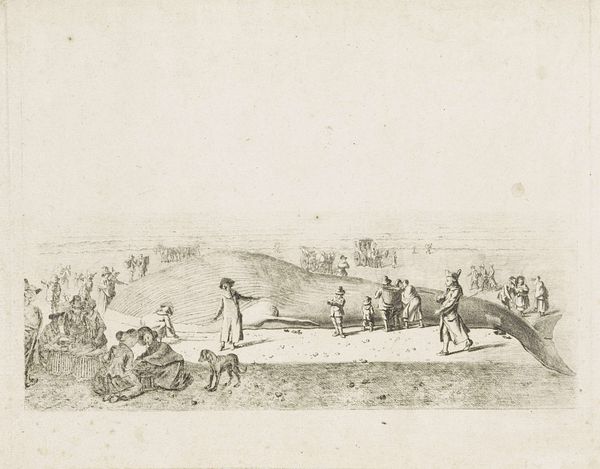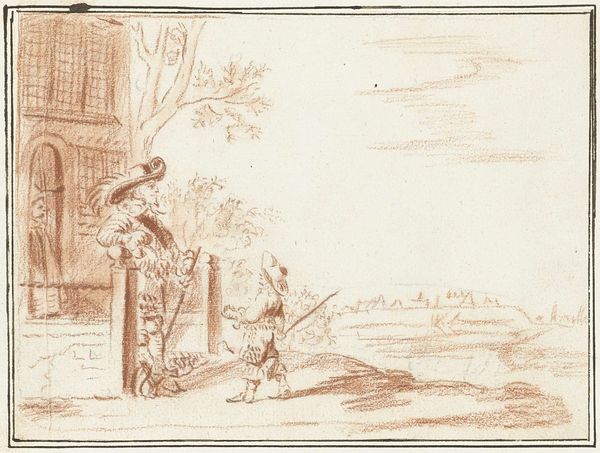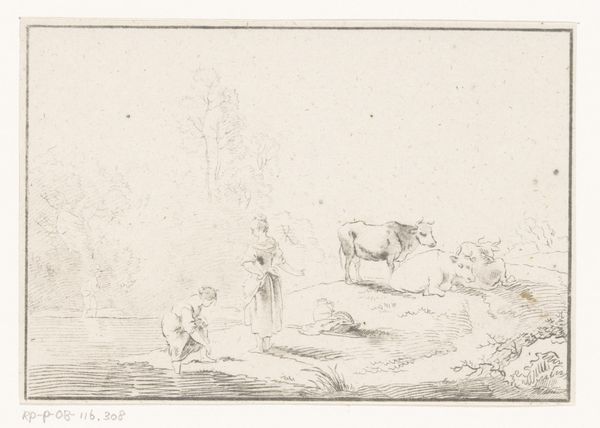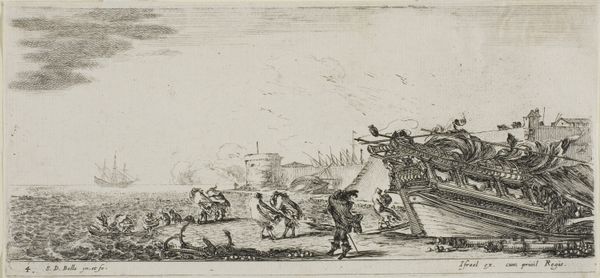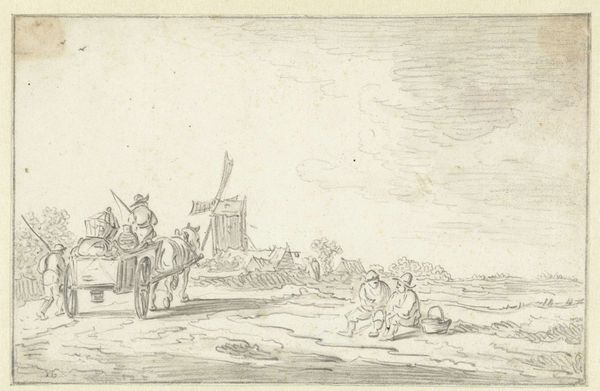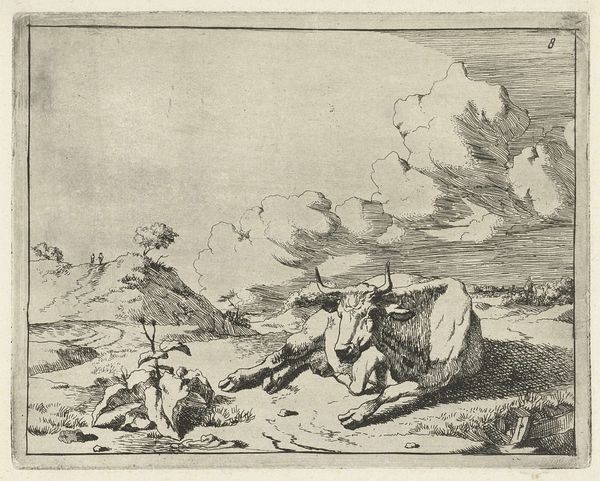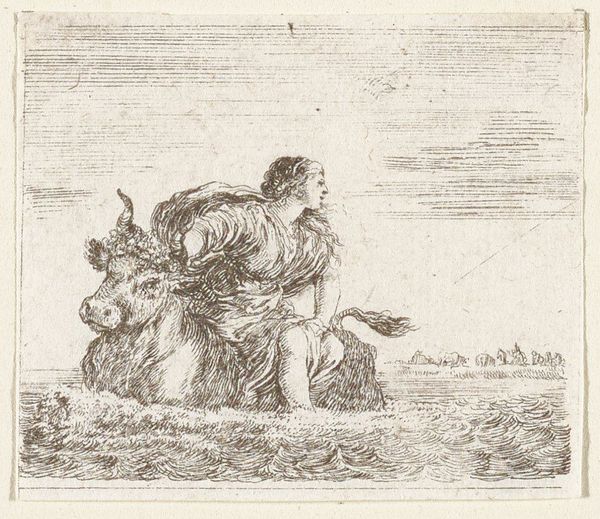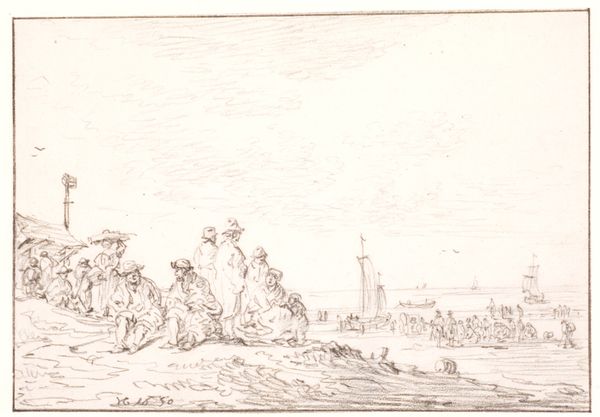
drawing, paper, watercolor
#
drawing
#
dutch-golden-age
#
pencil sketch
#
landscape
#
figuration
#
paper
#
watercolor
#
watercolour illustration
#
genre-painting
#
sketchbook art
Dimensions: height 105 mm, width 163 mm
Copyright: Rijks Museum: Open Domain
Curator: Harmen ter Borch's "Three Boys by a Gate," a Dutch Golden Age drawing from around 1653, presents a seemingly simple scene. It's currently held at the Rijksmuseum. Editor: The sepia tones lend a melancholy air. It’s quite loosely rendered, almost dreamlike. The composition is odd too—all these boys crowded to one corner, staring at… what? Curator: I think the looseness contributes to its candid nature. Ter Borch was a master of capturing everyday life. Look closely; that "gate" could be read as a barrier, the liminal space between childhood innocence and the outside world. Editor: That's interesting because the fence itself becomes a charged space when considering the restrictive social structures imposed on young men of this era. What expectations, what limits were set for their futures? Were they free? Curator: Exactly! Fences in art, from van Eyck onward, have often indicated boundaries – physical but also symbolic, suggesting property, exclusion. The three boys clustered near it... maybe they are on the precipice of something. Editor: Ter Borch worked during a period of intense social and economic change. So the presence of a rather weather beaten looking fence carries other associations related to rural labour practices, or enclosure, impacting marginalized families, even kids. Curator: Perhaps. Although genre scenes are filled with symbolism we now only grasp hints of, the appeal rests in those universal themes of youth, curiosity, and a world on the cusp of change, a mood that permeates it all, like a sigh on paper. Editor: Agreed, the boys' seemingly quiet observation speaks volumes. The work encourages reflection on those who might not historically have enjoyed access to these opportunities. It holds powerful social commentary for its time. Curator: For me, the symbolism, while open to interpretation, elevates the sketch to a lasting reflection of universal experiences with childhood thresholds and boundaries. Editor: Yes, whether material or imagined, the boundaries define a child's space of potentiality, inviting reflection on freedom and belonging. It makes the picture reverberate far beyond its seemingly quiet composure.
Comments
No comments
Be the first to comment and join the conversation on the ultimate creative platform.

